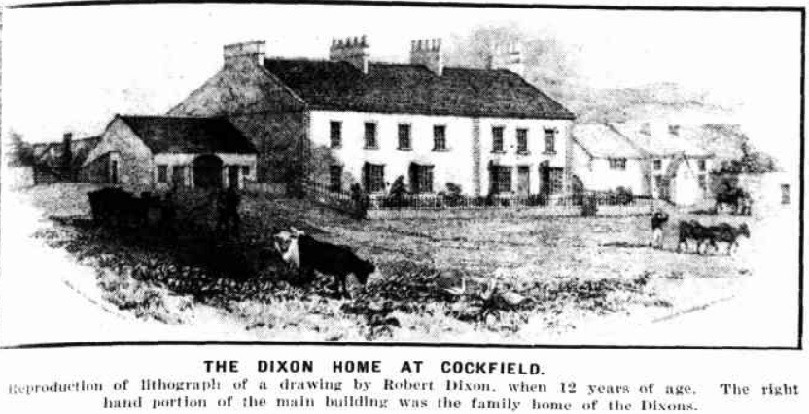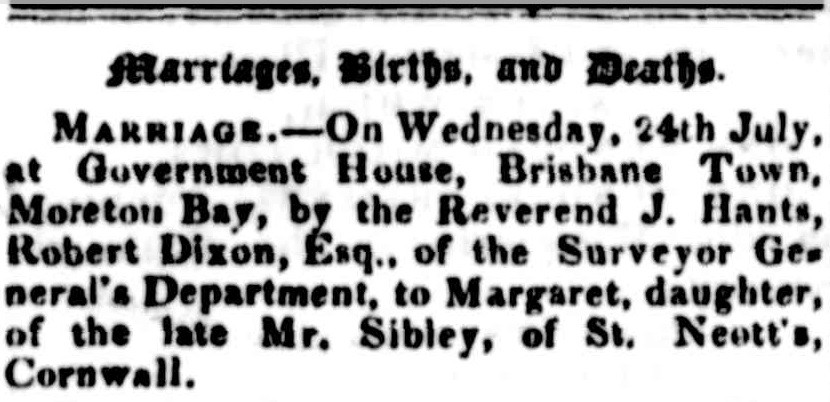The first marriages in the Moreton Bay settlement 1839: behind the records
By Stephanie Ryan, Research Librarian, Library and Client Services | 30 June 2023
In 1839, the small convict settlement in Moreton Bay, northern New South Wales, was on the cusp of change. A settlement for secondary offenders, it was established in 1824, initially at Humpybong on the Redcliffe Peninsula, before it was moved to Brisbane in 1825. It was a tough place – punishment for those who had already been transported and then went on to commit further crimes in Australia.
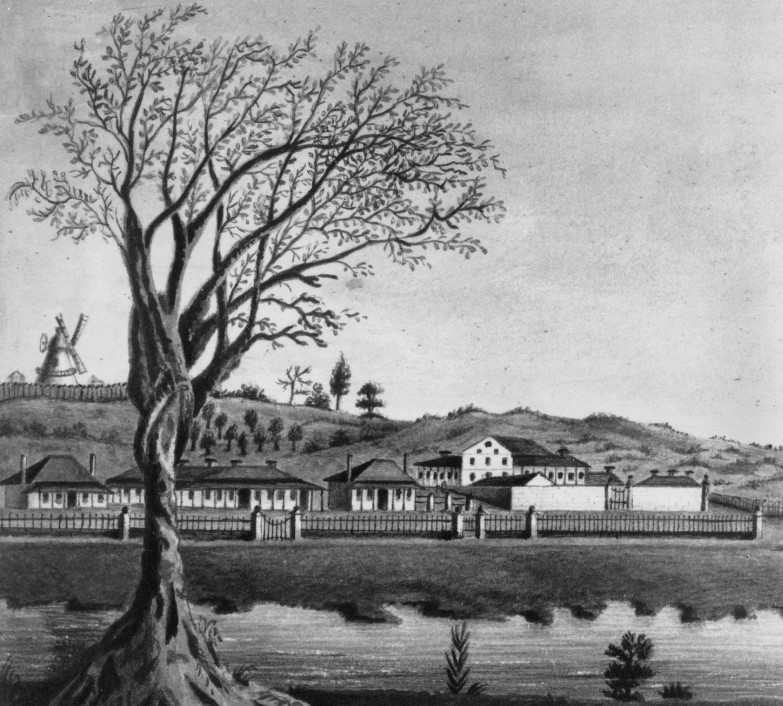
Early drawing of a section of the town of Brisbane, Queensland including the Convict Hospital, 1835. John Oxley Library, State Library of Queensland, Negative number: 138146
By 1839 it had been decided to close this penal colony and move towards free settlement. To do so, the town and its environs would need to be surveyed. Blocks of land suitable for purchase, and roads, would replace the haphazard paths and buildings. The remaining 57 female convicts were sent to Sydney. Male convicts who were not needed for maintenance of the settlement or surveying assistance were also removed, reducing their number to 94. The secondary offenders serving sentences, who had constituted most of the Moreton Bay penal colony, had not been allowed to marry, so the first two marriages were those of surveyors, Robert Dixon and James Warner, who arrived and laid out the town.
Robert Dixon
Robert Dixon, the senior member of the surveyors, was born in Cockfield, Durham, England in 1800.
He moved to a very different world from his home when he went to Van Diemen’s Land (Tasmania) in 1822 and, soon after, to Sydney. From 1827 to 1835 he surveyed parts of Sydney before returning to England to marry. As the marriage did not eventuate, in 1837 he returned to surveying in New South Wales, and accepted Governor Gipps’ instruction to survey Brisbane in 1839.
The Colonial Secretary’s Correspondence letters received relating to Moreton Bay and Qld 1822-1860 record some of what it took for his next marriage attempt to happen. As Brisbane was a penal colony, movements of people in and out had to be recorded and approved. State Library of Queensland’s free descriptive index of this detailed record of administration on film A2.10 shows that Dixon requested a passage for his intended spouse, Margaret Sibley, via the Commandant, Owen Gorman, for her to travel with the Commandant from Sydney to Brisbane. Her brother-in-law, Henry Dangar, further supported this request to travel on the vessel Curlew (A2.10 pp 737-739). This was approved by Governor Gipps (A2.10 p 658), and she arrived for the wedding.
The marriage records show the witnesses were the Commandant and James Warner, another surveyor. There was no church, so the event took place in the Commandant’s residence. The minister was Lutheran, Johann Handt, an assistant to William Watson, whose main work was to minister to the local Aboriginal people and to the convicts under the auspices of the Church of England.
The Queensland and New South Wales registries have separately indexed the church records. From the same record each authority provides some different information. New South Wales indexes often provide the place of registration. Queensland provides the exact date of the event. The registration numbers are also different. The Queensland registration number (1854/BMA/1) indicates that it is the first marriage, but the New South Wales number reflects the overarching number imposed across a number of groups of parish records for a particular period and event.
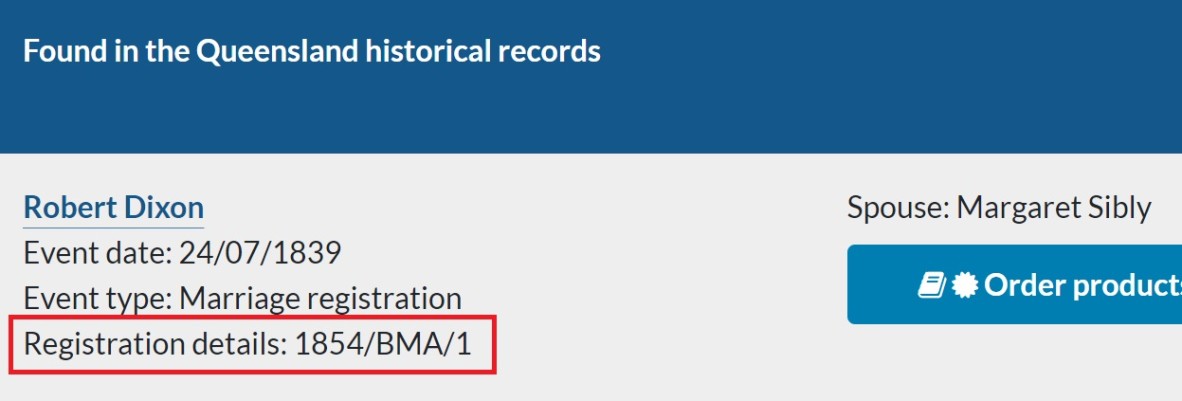
Index entry for Robert Dixon’s marriage. Queensland Registry of Births, Deaths and Marriages: https://www.familyhistory.bdm.qld.gov.au/

Index entry for Robert Dixon’s marriage. New South Wales Registry of Births, Deaths and Marriages: https://familyhistory.bdm.nsw.gov.au
The marriage notices in the New South Wales papers provide the background of both bride and groom. There was no Brisbane newspaper until 1846.
James Warner
James Warner was born in London in 1814 and served in the navy. In 1837 he resigned his commission to work as a clerk in the Surveying Department, New South Wales. In November 1839 he married Clara Lindo nee Brandon, a young widow whose husband drowned in Sydney leaving her with two children, as reported in the Sydney Monitor, 6 April 1838 p3. James Warner had been in the same boating accident but survived.
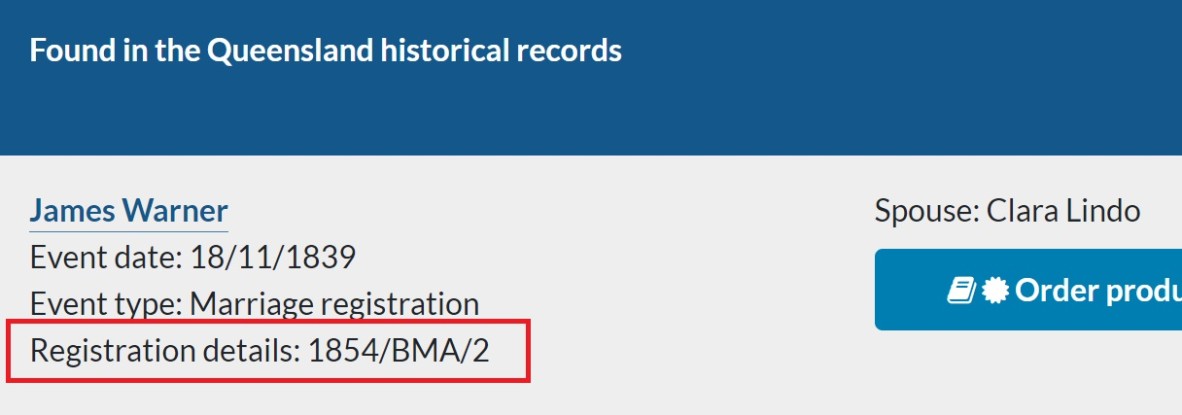
Index entry for James Warner’s marriage. Queensland Registry of Births, Deaths and Marriages: https://www.familyhistory.bdm.qld.gov.au/

Index entry for James Warner’s marriage. New South Wales Registry of Births, Deaths and Marriages: https://familyhistory.bdm.nsw.gov.au
Johann Handt was again the officiating minister at the wedding. The witnesses were Robert Dixon and Lydia Crook, daughter of William Pascoe Crook. Once again, the Colonial Secretary’s Correspondence A2.10 pp 800-804 fills in the background. Lydia was the sister of Johann Handt’s wife. William Pascoe Crook, a prominent Evangelical minister, was involved in the project to support the German mission to christianise the local people, and requested supplies and permission for his daughter (for her health) to travel to Moreton Bay.
The two surveyors faced many challenges: a limited social circle, inadequate food for surveying parties, untrained men, inadequate equipment, and distrustful local inhabitants. Despite the problems, by March 1840 Dixon had completed a survey of Brisbane town in a grid pattern. Henry Wade, a later surveyor, made some modifications, notably to street width, but essentially the plan of Brisbane’s centre goes back to the early surveyors.
By the end of 1840 both families had one child. James Warner eventually had 7 in Moreton Bay. He remained in Queensland, where he was known for his beautiful garden and warm hospitality.
Robert Dixon left in 1842, moving to southern New South Wales, then England, and later back to New South Wales.
Their marriages were the only ones in Moreton Bay until free settlement in 1842, to which their surveying links them.
Find out more
- Search Queensland Registry of Births, Deaths and Marriages information: https://www.qld.gov.au/law/births-deaths-marriages-and-divorces/family-history-research
- Find the original birth, death or marriage documents on microfilm in New South Wales pre-1856 church records by using the register number and individual record number from the New South Wales Registry index to locate them in the right film. Check the guide: https://mhnsw.au/guides/births-deaths-and-marriages-registers-1787-1856/
- Discover what Moreton Bay was like before separation in December 1859 from original documents: https://www.slq.qld.gov.au/research-collections/family-history/colonial-secretarys-letters-received-relating-moreton-bay-and
- Find a number of original sources from the days of the convict settlement: Brisbane Town in convict days, 1824-1842 / J. G. Steele
- Check the first section 1824-1842, to explore the life of the penal colony: Brisbane, the first thirty years / W. Ross Johnston
- Read the biographies of Robert Dixon 1850-1858 and James Warner 1814-1891:
More information
One Search catalogue – https://onesearch.slq.qld.gov.au
Ask a librarian - https://www.slq.qld.gov.au/services/ask-librarian
Library membership – https://www.slq.qld.gov.au/services/membership
Plan your visit – https://www.slq.qld.gov.au/visit
Comments
Your email address will not be published.
We welcome relevant, respectful comments.
